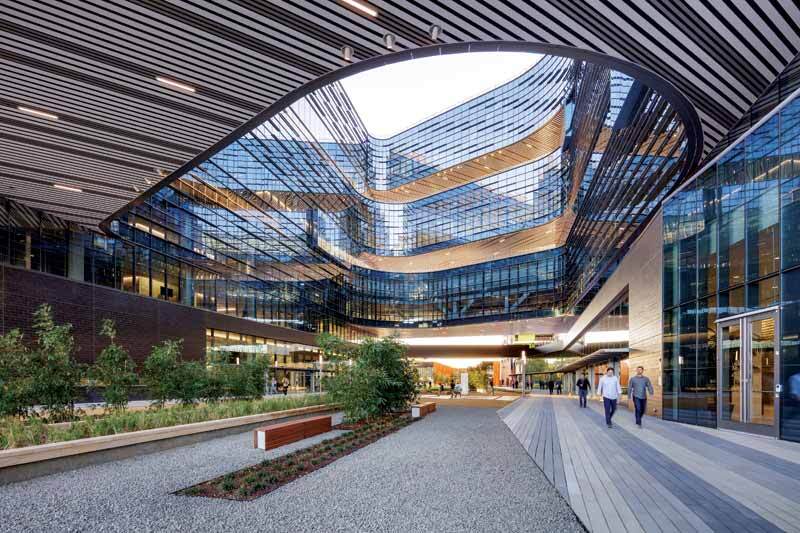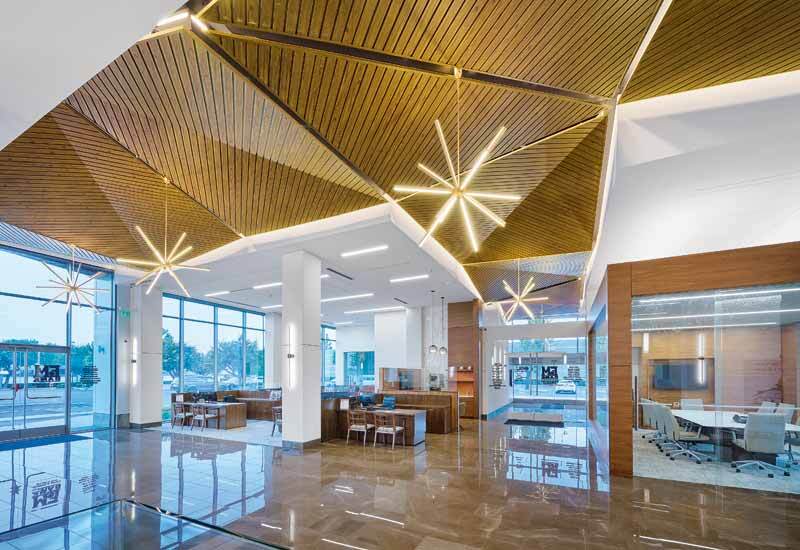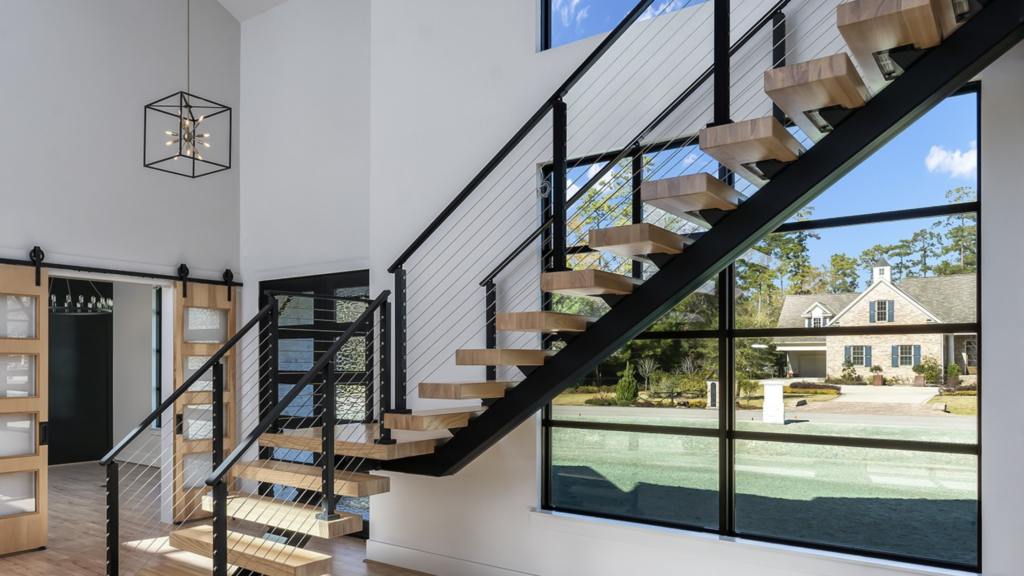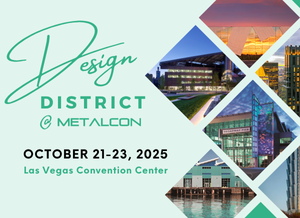
What is Architectural Metalwork?
Architectural metalwork is the design, fabrication and installation of aesthetically-pleasing metal structures and components. It’s where function and structure meet art and design. Both fabrication and components come into play with architectural metalwork. Most have a function beyond looking impressive and include ceilings, balconies, crown molding, handrails, staircases, balustrades, canopies, interior artworks, and protective panels to name a few. Architectural metalwork manufacturing involves producing metal components for buildings, ensuring buildings are functional and aesthetically pleasing.
Metal Ceiling Design Trends
According to Metal Architecture, metal ceilings are a popular trend offering an array of design options. Ceilings offer designers a place to create durable, low-maintenance and sustainable designs that meet performance requirements. Available in a variety of metals and finishes, metal ceiling tiles can come in all shapes and sizes from classic planks and tiles to custom curved beams, as well as perforations and more. From airport lounges to hotel lobbies, ceilings can create a statement and enhance the overall design and feel of the space.

There are many exciting new offerings with laser-cut metal ceilings and walls that impact any special environment and provide a durable design solution. For example, lay-in metal ceiling panels can create different depths and dimensions, with 3-D panels, sloped and diagonal options available. Additionally, metal torsion spring-based systems are being produced in 3-D geometric shapes, such as triangles or radial panels, allowing complex patterns.
To support a healthier indoor air quality, another growing design trend for metal ceilings is biophilic-based designs that aim to bring the outside in. This is driving a demand for more wood-look finishes on metal ceiling products. Metal finished with a wood-look will continue to grow in popularity with an ever-expanding portfolio of grains and color options.
Exterior Metal Finish Trends
Architect Colin Drake, AIA, LEED AP, principal and civic studio leader with JRA Architects in Louisville, Kentucky, says “Metal’s light weight and diversity of fabrication methods allow applications across nearly every exterior exposure and interior environment. High-performance, self-cleaning and cool surface treatments are making traditional coated surfaces last longer, look better and offer long-term energy savings.”
MetalArchitecture reports current trends range from color, special effects, metal seen as metal, and engineered protective coatings.

Photo courtesy of Sherwin-Williams DesignHouse; credit: MetalArchitecture
Color
Metal panels can be finished in over 40 unique colors. With so many options for customization, architects and designers can specify a hue that fits a project’s needs without compromising their aesthetic vision.
Special Effects
Special effects such as structured or disruptive finishes are becoming more increasing in popularity and serving as a basis of design or as an accent. These design accents are ranging from a modest somewhat smooth, glossy textures to coarse, matte appearances, with multicolor, mica/metallic effects, or even polychromatic pigments that change color with different angles and lighting.
Metal Seen As Metal
The growing trend of using an exterior metal finish in a way that expresses its material essence has designers drawn to the clean, sleek look of metal with the assurance that their coating will last against the elements. New technology has made it possible to achieve a natural aluminum-like appearance using anodized aluminum.
Protective Coatings
As designers and builders continue to shift their focus to sustainability and the long-term performance of a building’s exterior, the trend is to move away from off-the-shelf or even premium latex and urethane-based paints to engineered coating systems. Issues with off-the-shelf and premium latex paints such as fading and degrading are prompting architects to specify engineered coating systems that use PVDF resin as a binder, along with complex inorganic pigments to resist the film erosion that leads to fading and chalking. High-performance PVDF-based coatings are letting architects better design with and specify bright and bold colors, secure in the knowledge that those colors will remain true for the long term.
Metal Trending with Staircases and Balustrades

As sustainability continues to be at the forefront of design considerations, eco-friendly metal options are gaining traction for both staircases and balustrades. This year, professionals involved in designing both commercial and residential spaces are paying attention to the latest developments in railing designs and materials, ensuring that projects are both functional and visually striking.
Designers are able to customize and personalize more, take a “less is more” approach, play with color and style, and integrate technology such as incorporating LED lighting, motion sensors, and even built-in speakers into metal staircase designs.
The balustrade, traditionally seen as a safety feature, has evolved into a design element in its own right. The trend to craft balustrades from metal which started last year is continuing with the ability to incorporate iIntricate patterns, geometric shapes, and even custom artworks, designers can create a visual masterpiece that enhances the entire staircase.
Design District @ METALCON

Architects and design professionals are invited to attend The Design District at METALCON, sponsored by PPG.
This immersive hub features:
- Exclusive education with up to a year’s worth of AIA LUs and HSWs
- Presentations by visionary architects and industry thought leaders
- Innovative products and solutions from 250+ top-tier exhibitors
Whether you’re pushing aesthetic boundaries or prioritizing performance and sustainability, the Design District delivers the insights, tools, and connections to elevate your work—and your impact.
By attending METALCON, you will have the opportunity to view the latest metal products available for the building envelope, as well as for interior use, learn how metal components can add to a building’s sustainability and resiliency, understand how metal components incorporated into a building can help to improve a building’s energy efficiency for new construction and retrofit projects and so much more.
